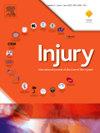创伤外科医生:我们实现性别平等了吗?
IF 2.2
3区 医学
Q3 CRITICAL CARE MEDICINE
Injury-International Journal of the Care of the Injured
Pub Date : 2025-02-01
DOI:10.1016/j.injury.2024.112087
引用次数: 0
摘要
目的:在骨科手术中确实存在一些关于性别平等的担忧。本研究的目的是:(1)比较手术次数,(2)比较死亡率,(3)调查髋部骨折手术中的性别差异,以及(4)分析实施闭合复位内固定(CRIF)和半关节置换术(HA)的主治和住院医生的性别分布。方法:回顾性纳入4年期间在一级创伤中心接受股骨近端骨折治疗的所有患者,年龄在0 ~ 75岁之间。排除标准为随访结果:172名主要外科医生(男:141名(82%);F: 31 (18%);NB: 0(0%))进行了1916例手术(CRIF: 1425例(74.4%);Ha: 491(25.6%))。14.7%由女外科医生进行手术(第一组:15.5%;第二组:12.2%;P = 0.076)。组1 (p = 0.759)和组2 (p = 0.981)的平均手术时间均无性别差异。同样,在第1组(p = 0.5779)和第2组(p = 0.069)中,性别之间的死亡率也没有显著差异。此外,在CRIF (p = 0.636)或HA (p = 0.141)的表现中没有发现显著的性别差异。最后,对包括CRIF和HA在内的各种手术的主治医生和住院医生的性别分布进行分析,发现性别分布没有显著差异(CRIF: p = 0.133, HA: p = 0.468,所有手术:p = 0.122)。结论:尽管骨科仍然是男性主导的领域,但性别并不影响手术结果或进行CRIF或HA的可能性。然而,重点应转向通过提供平等机会和消除基于性别的社会和教育障碍来提高外科教育和实践的包容性。本文章由计算机程序翻译,如有差异,请以英文原文为准。
Trauma surgeons: Have we achieved gender equality?
Purpose
Several concerns regarding gender equality in orthopedic surgery do exists. The aim of this study was to (1) compare operative times, (2) compare mortality rates, (3) investigate gender disparities in hip fracture surgeries, and (4) analyze gender distribution among attending and resident surgeons performing Closed Reduction Internal Fixation (CRIF) and Hemiarthroplasty (HA)
Methods
All patients >75 years old treated for proximal femur fractures in a level-one trauma center in a four-year timeframe were retrospectively enrolled. Exclusion criteria were follow-up <3 years, incomplete data, active patients treated with total hip arthroplasty (THA) and other surgeries performed during the same anesthesia. Patients were grouped according to procedure: 1) Closed Reduction Internal Fixation (CRIF) and 2) Hemiarthroplasty (HA). Gender and level of expertise (residents or attending surgeon) of leading surgeons (male (M), female (F) and non-binary (NB)) was extracted from medical records. Operative time, mortality rates, and the likelihood of performing either CRIF or HA were compared across genders.
Results
A total of 172 leading surgeons (M: 141 (82%); F: 31 (18%); NB: 0 (0%)) performed 1916 surgical procedures (CRIF: 1425 (74.4%); HA: 491 (25.6%)). 14.7% were performed by female surgeons (group 1: 15.5%; group 2: 12.2%; p = 0.076). No gender disparities were observed in the mean operating times for either group 1 (p = 0.759) or group 2 (p = 0.981). Similarly, there were no significant differences in mortality rates between genders in group 1 (p = 0.5779) or group 2 (p = 0.069). Additionally, no significant gender disparities were found in the performance of CRIF (p = 0.636) or HA (p = 0.141). Finally, analysis of gender distribution among attending and resident surgeons across various procedures, including CRIF and HA, revealed no significant differences in gender distribution (CRIF: p = 0.133, HA: p = 0.468, all procedures: p = 0.122).
Conclusions
Despite orthopedics still being a male-dominated field, gender does not affect surgical outcomes or the likelihood of performing CRIF or HA. However, the focus should shift towards improving inclusivity in surgical education and practice by providing equal opportunities and removing social and educational barriers based on gender.
求助全文
通过发布文献求助,成功后即可免费获取论文全文。
去求助
来源期刊
CiteScore
4.00
自引率
8.00%
发文量
699
审稿时长
96 days
期刊介绍:
Injury was founded in 1969 and is an international journal dealing with all aspects of trauma care and accident surgery. Our primary aim is to facilitate the exchange of ideas, techniques and information among all members of the trauma team.

 求助内容:
求助内容: 应助结果提醒方式:
应助结果提醒方式:


